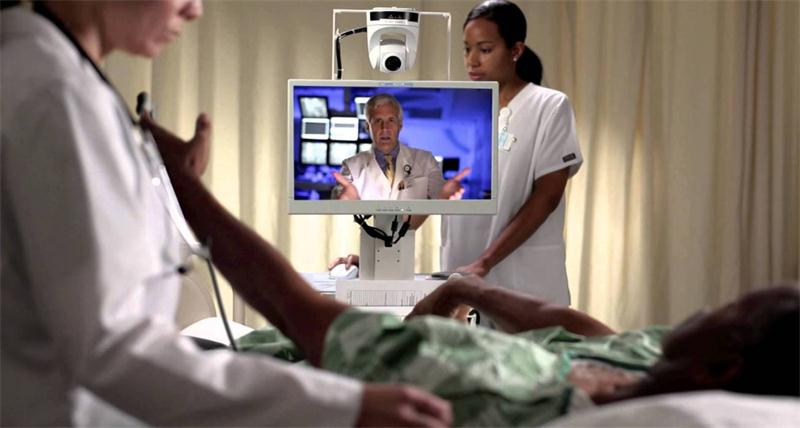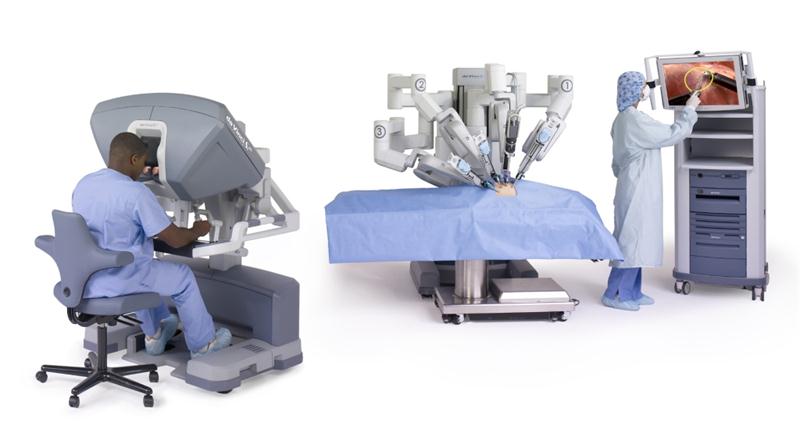Telesurgery vs Telemedicine: What Are the Differences?

Today is the period wherein technology is the main driver of healthcare’s direction. Computers, robots, information and telecommunication networks are altering the face of healthcare.
ezTalks offers services wherein the uses of telemedicine and telesurgery can be delivered to and from between the expert and the patient. Telesurgery and telemedicine will eventually become a novel progress that mankind can experience in the medical field wherein these can aid patients get access to remote and far away medical experts and surgeons.
Part 1: What is telesurgery?
Telesurgery has become a more demanding field in telemedicine. In this case, a medical expert surgeon performs a surgical case without his being present in the operating room (OR). Although the expert surgeon is outside the OR, he can perform the operation as demonstrated in this video.
The truth in telesurgery is its valuable and viable choice where less experienced surgeons in the OR and are next to the patients will be guided by the expert surgeon who might be some miles away. This has a number of benefits like the best result for the client or patient, reduced costs because no one travels for the surgery, local surgeons can learn while they are guided or assisted by the expert surgeon, and patient’s and his family’s expenses and discomfort will be reduced because they do not have to travel to see the expert surgeon for the surgery. These are real values of telesurgery, which can materialize today, as well as in the future.
Although there are advantages in doing telesurgery, there are some challenges that it needs to overcome. A couple of them are reflected in the list below:
Regulatory process in a country to let such medical care procedure as a reason that prevents its adoption at the moment. Some countries may have a regulatory body that is more straightforward and can allow this system to be utilized anytime.
Today's reimbursement process does not have the provision to pay the expert surgeon who's outside the OR performing the operation.
The most usual association of the “telesurgery” terminology is doing remote surgery. It describes the surgery performed by a surgeon who might be miles away. A local medical expert may routinely do advanced and minimally invasive surgical procedures at a remote medical facility while sitting at his surgical console some miles away in another place. In remote surgery, limitation is not just distance or the lag time when an expert moves the console handles and the instrument’s tip moves in a remote place. There are preliminary data that provides a rough approximation of the limitations. There is up to 25 ms latency that is not a delay perception. With 50 ms delay, the expert knows that there is something wrong but can automatically compensates it.
With the robotic surgery introduction and its progress in the last ten years, telerobotic surgery will benefit from the same conceptualization.

Part 2: What is telemedicine?
Telemedicine is a surfacing field that is in its infancy stage. It is going to have a tremendous growth as time passes by, which is changing the lives of people. With its uniqueness that lets expert care to be accessed by rural areas and inner cities, it is done through telecommunication like ezTalks services can be an assistance of.
ezTalks Meetings can deliver free videoconferencing experience between the healthcare giver and the client or patient. Especially when the patient is in a remote area, the expert can still be contacted and consulted. It can also be installed easily on any device so anyone can use this service anytime.
With the power of telecommunication like ezTalks offers, the combination of it with medical services brings telemedicine the power and benefits that it should have. Even though the presence of an expert next to a patient can bring its healing merits, it is not possible to have expert and competent medical practitioners to be there wherever their field of expertise is needed.
In addition, in the case of web conferencing and videoconferencing that reduce costs by lowering the cost of traveling, telemedicine can benefit the people that do not have the means to get the expert medical care. Currently, telediagnostics truly provide quick 24-hour service and save costs.
An example of uses of telemedicine is a telecare to prisoners is provided as it is a challenging occurrence to either transport the inmate to a medical facility or to bring a medical expert to the prison environment.
Numerous applications of telemedicine surface today, such as teleconsultation, telecheckup, teledematology, teleradiology and telesurgery, among others.
Part 3: What are the difference between telesurgery and telemedicine?
Telesurgery currently has to face the legal, humanistic and ethical issues as it is not provisioned by any specific law today. It is a performance that should be done by an expert surgeon who is far away. It gathers the attention of practitioners more but there is still the argument of its components in surgical services continuum.
As for telemedicine, it is the main field that branches out to telesurgery as part of it. Through the use of telecommunication tools, it delivers health services even from a distance. It expands further the telepresence surgery.
With telesurgery vs telemedicine, the latter is currently acceptable through telecommunications technologies present in the market today.
Conclusion
It is undoubtful that in keeping with revolutionary progresses in telemedicine, surgery is also increasingly fascinating. Nonetheless there are still some humanistic, legal or ethical issues to be addressed regarding telesurgery. Moreover, the novel progresses will be critically evaluated when it is going to be applied in the future.